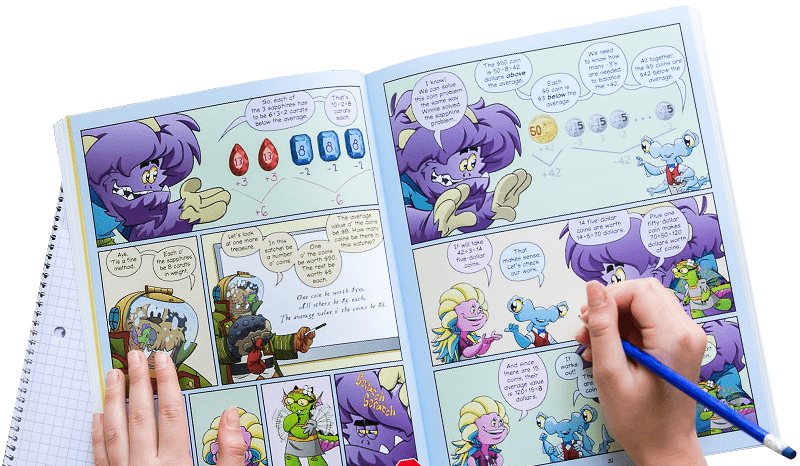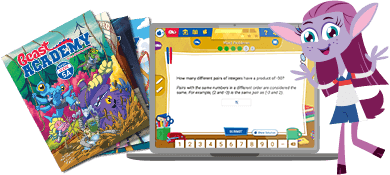Speed
A variation on the classic game that'll have you and your opponent adding and subtracting 10.
Instructions
This game uses your 0-20 Deck from the Number Deck activity. (Or see Variations below.) Start by shuffling your deck well. (The game works much better when the deck is really shuffled.) Place 6 cards face up between players. Then split the rest of the deck evenly, dealing each player a stack of face-down cards that will be their draw pile.

To start, each player draws 5 cards from their draw pile. Then players both play at the same time, placing cards from their hand face-up onto the 6 piles in the middle. Don't take turns. This game is about who is fastest!

To put down a card, it must be 1 more, 1 less, 10 more, or 10 less than the card you put it on top of. For example, if there is a 3 showing in one of the middle piles, you could place a 4 (1 more than 3), a 2 (1 less than 3), or a 13 (10 more than 3) on top of it. 10 less than 3 is a number less than 0 (a negative number), so unless you have a really special deck, you won't need to worry about that in this game.
One more example: If a 12 is in the middle pile, you could place a 13 (1 more than 12), an 11 (1 less than 12), or a 2 (10 less than 12). 10 more than 12 is 22, but the deck only goes to 20. You can see that for most cards in the middle pile, there are 3 possible cards that can be placed on top.
As you place cards in the middle piles, refill your hand of 5 cards from your draw pile. Make sure you never have more than 5 cards at a time (but it's okay to have fewer than 5 as you play).
The player who gets rid of all of the cards in their draw pile first wins.
Sometimes, both players will get "stuck" at the same time—not able to put down any of the cards in their hand. When this happens, both players put the 5 cards in their hand at the bottom of their draw pile, then draw a completely new 5-card hand from the top of their draw pile.
Don't forget: it's Beast Academy Playground, not Beast Academy Study Hall. Change the rules, be silly, make mistakes, and try again. The Variations and Learning Notes are here for you if you want to dive deeper, but not all of them apply to learners of every age. The most important thing is to have fun.
What do you think of this activity?
We're always looking to improve. Submit your feedback to us below.
- addition
- subtraction
- place value
- MP8
- K.NBT.A.1
- 1.OA.C.6
- 1.NBT.B.2.b
- 1.NBT.C.5
- 2.OA.B.2

Ready to level up?
Keep problem solving with Beast Academy’s full math curriculum for students ages 6–13. Check out our captivating comic book series and immersive online platform.
LEARN MOREBring problem-solving to your classroom
Keep your entire class engaged with a full book and online math curriculum, for students ages 6–13. 98% of teachers say they’re satisfied with Beast Academy.
LEARN MORE



Ready to level up?
Keep problem solving with Beast Academy’s full math curriculum for students ages 6–13. Check out our captivating comic book series and immersive online platform.
LEARN MOREBring problem-solving to your classroom
Keep your entire class engaged with a full book and online math curriculum, for students ages 6–13. 98% of teachers say they’re satisfied with Beast Academy.
LEARN MORE
Sign up to be notified when new videos are released.















































